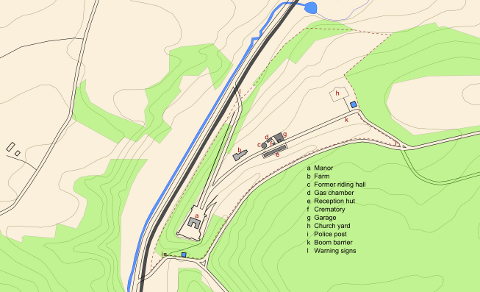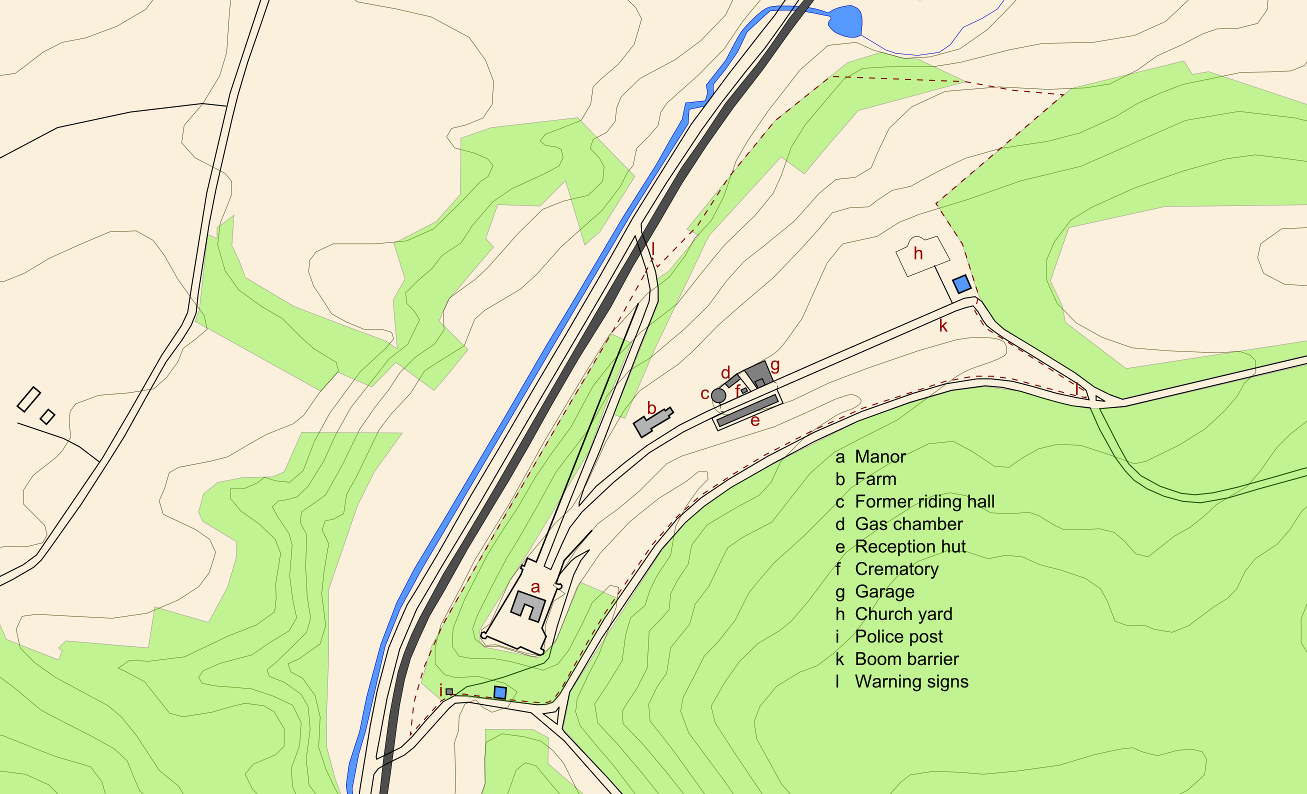The Trees of Grafeneck
The Project
The project is a portrait of the alley of Grafeneck through the seasons.
Besides presenting a wonderful task for a landscape photographer, there are historical and personal motives shaping the project.
These trees stood along the route of the last stage the grey buses took when transporting patients to the gas chamber during the Nazi "Euthanasie" killing programme in 1940. Therefore I focus on the old trees (70 years and older) on the road up the hill to the east of Grafeneck castle (I call that passage the lower alley), round two sharp corners and into the straight upper alley.
As the deportations went on the whole year round (January 18 to December 13), I will cover all seasons. I would like to have a picture for each day on which a deportation took place (or was attempted), but research on the dates is work in progress.
Historical information
Geographically, Grafeneck is on a hill in a rolling limestone landscape known as the Swabian Jura or Swabian Alps (Schwäbische Alb). There the waters run towards the Danube (and ultimately to the Black Sea).
In the Middle Ages a castle stood on the front cliff. In the Renaissance it was replaced by a hunting lodge by the dukes of Württemberg. Carl Eugen of Württemberg transformed the site and the building into a summer residence in the Baroque style. The top of the hill had been leveled to form a ridge on which a straight alley ran from the north to the manor. After Carl Eugen the residence was neglected; it declined and was offered for sale at the turn of the 20th century.
When the first private owner started breeding horses around 1904, there were stables, a circular hall for training horses, and a remise (a coach house). For building plans see [2012Stoeckle], p. 70. The estate was resold several times until it finally was acquired by the Samariter Stiftung (a charitable foundation in Stuttgart) in 1928 as a home for disabled men.
In 1939 plans for a large-scale killing operation were launched from Berlin. Target groups were: patients with mental and other health problems, and long-term inmates deemed useless due to old age or uncooperative attitude. Looking for a centre in the south-east of Germany, they selected Grafeneck, probably at the suggestion by Eugen Stähle, head of public health in the Ministry of the Interior of Württemberg, which at the time was a province between Baden and Bavaria. In the autumn of 1939 Grafeneck was seized and modified to become the first industrial killing facility in Germany. The entire hill was made off limits and guarded by the SS. The manor held offices and living quarters for staff. In the remise at the centre of the ridge, a gas chamber was installed, disguised as a shower room. Around the gas chamber, a crematory, a garage for the buses and a reception hut were placed. The whole complex was surrounded by a tall timber fence (about 3 m / 10 feet high) to screen it from view.
From January to December 1940 Grafeneck was run as "Anstalt A" (facility A) in the "Euthanasie" operation directed from Berlin headquarters (located in Tiergartenstrasse 4; hence the modern term T4 for the entire operation). Daily calls by telephone and a courier car secured permanent communication between headquarters and the killing centres - up to four at a time. The deportations were planned in Berlin but officially announced to the patients' homes by the Ministry of the Interior of the respective provincial government. In the case of Grafeneck, the states involved were Baden, Württemberg, Bavaria and possibly Hesse-Nassau. The buses, up to 3 plus accompanying cars, undertook their journeys on direct orders from Berlin. The passengers were selected according to pre-prepared lists and a required number (usually 75 per transport). On their arrival, the victims were checked briefly and gassed without delay.
In the very same year, 1940, the linden alley was registered as a historically important site ([2011Samariterstiftung], p. 101).
When the killing operation was shut down, the modifications were reversed. The remise deteriorated and was finally pulled down in 1965. The Nazis used the castle for their "Kinderlandverschickung", by then a disguised evacuation of children and mothers to areas with lower risk of bombing. After the war the French occupation admistration had plans for Grafeneck but finally returned it to Samariter Stiftung.
Today the homes and working places of the Samariter Stiftung and the farm extend to almost the entire ridge. The alley from the north up to where the fence had been, is still intact. Only a few trees had to be felled or were planted in the last 70 years. So most of the trees in both alleys today are there as they were when the grey buses returned with their load of doomed men, women and children. Therefore the project is about them.
Personal background
I have travelled past Grafeneck many times for a long time as I do a lot of hiking and cycling in the Swabian Alps.
Meanwhile, my perception of the place has changed and deepened. Grafeneck has become to me
- a part of one of my favourite landscape, the Swabian Jura: gently hilled, weatherbeaten, a stark limestone landscape
- a collection of wonderful old trees, gnarled individuals gathered together to form varied and beautiful groups
- a place I had to pass by many times while cycling
- a historical place with a Baroque manor
- a home and working place for disabled people
- a farm
- a historic place of Nazi terror
- the place where my great-grandmother was killed.
Plan
It will take a few years to complete the set of photos. I do not know all the transport dates and there are far more to attend than I can cover in - say - two years in my spare time.
Besides, I do not have the necessary technical and artistic skills to achive the optimum for all parts of the project:
- Choosing the days: weather, light, season and history have to be considered
- Photography: digital and chemical film, APS-C/35mm/MF, lenses
- Development: chemical, scans, Lightroom and digital processing
- Printing: I will have to learn that. There will be a book as well as a number of fine art prints and maybe a digital edition (of yet unknown design).
- Final selection of the series: one picture per date. Not due before 2016.
- Market: marketing could be done by someone else, not before 2016.
It will take me time to acquire and refine all required skills. Financial considerations also suggest a moderate pace. In the end, the project will take as much time and energy as I can muster. The main reason why I wanted to do it myself is the opportunity of having time to consider the various aspects of Grafeneck.
About this site
Putting up this site forces me to work on the load of pictures I produce, primarily selecting and developing the selected pictures up to a point were they can be shown to friends or a small, interested audience. By the feedback and the process itself I hope to find my way towards the final series.
All pictures on this site are under development. They might change, move in ranking, go or come. Nevertheless they are copyrighted (see the metadata of each picture).
Allthough I would like to get feedback, I cannot give any hope for a lively discussion as I am much more a reader than a writer (let alone a fast one). This being said you are welcome to give your opinion on the pictures or the series.
For historical questions I recommend the Grafeneck site, where you can get in contact to specialists and historians.
| [2012Stoeckle] | Th. Stöckle Grafeneck 1940 |
| [1947Lageplan] | Staatsarchiv Sigmaringen StAS Wü 29/3 T 1 Nr. 1758 |
| [2011Samariterstiftung] | Fr. Rößner "Im Dienste der Schwachen" |

